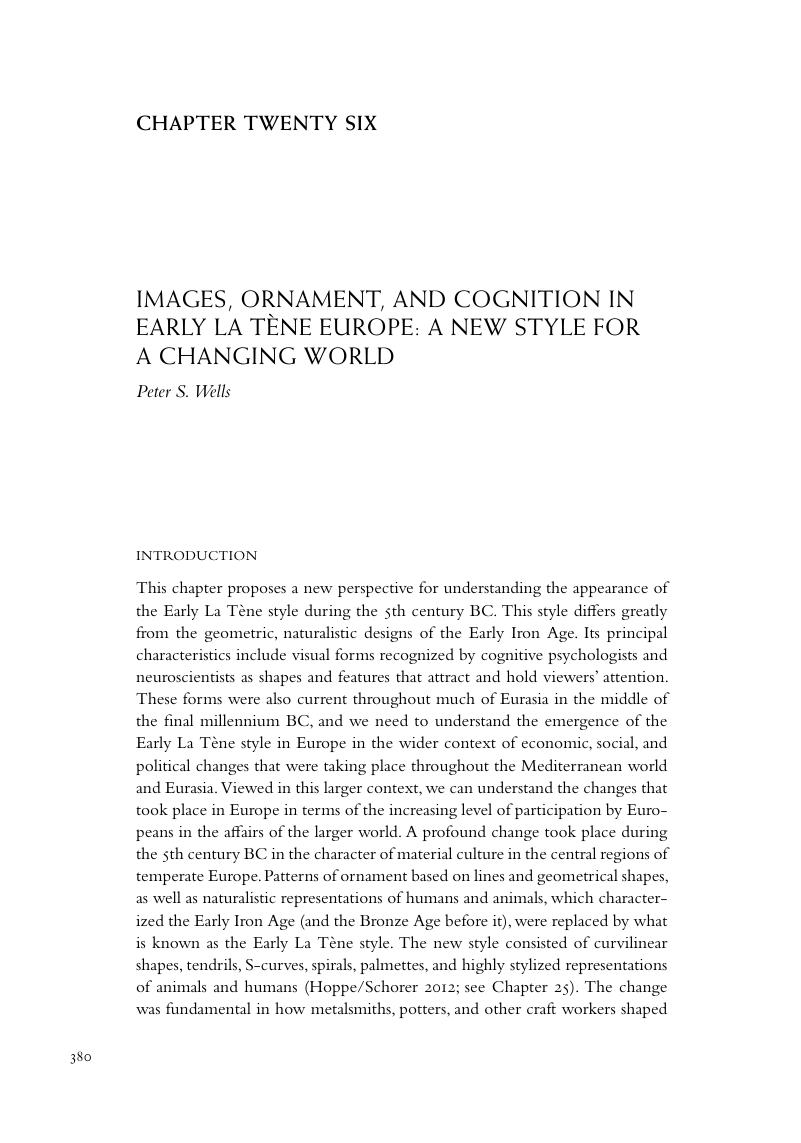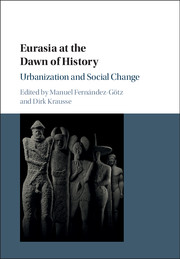Book contents
- Eurasia at the Dawn of History
- Eurasia at the Dawn of History
- Copyright page
- Contents
- Figures
- Tables
- Contributors
- Introduction
- Part I Between Myth and Logos
- Part II The Development of Social Differentiation
- Part III Approaching Social Complexity
- Part IV Urbanism through the Ages: Concepts, Models, and Definitions
- Part V Ancient Civilizations at the Turn of the Axis
- Part VI Times of Connectivity: The Mediterranean on the Move
- Part VII Early Urban Cultures from South to North
- Part VIII Changing Symbols, Changing Minds?
- Chapter Twenty Four Phase Transition, Axial Age, and Axis Displacement: From the Hallstatt to the La Tène Culture in the Regions Northwest of the Alps
- Chapter Twenty Five Early Celtic Art in Context
- Chapter Twenty Six Images, Ornament, and Cognition in Early La Tène Europe: A New Style for a Changing World
- Chapter Twenty Seven The Network Genesis of the La Tène Cultures: A Western Point of View
- Index
- References
Chapter Twenty Six - Images, Ornament, and Cognition in Early La Tène Europe: A New Style for a Changing World
from Part VIII - Changing Symbols, Changing Minds?
Published online by Cambridge University Press: 28 March 2017
- Eurasia at the Dawn of History
- Eurasia at the Dawn of History
- Copyright page
- Contents
- Figures
- Tables
- Contributors
- Introduction
- Part I Between Myth and Logos
- Part II The Development of Social Differentiation
- Part III Approaching Social Complexity
- Part IV Urbanism through the Ages: Concepts, Models, and Definitions
- Part V Ancient Civilizations at the Turn of the Axis
- Part VI Times of Connectivity: The Mediterranean on the Move
- Part VII Early Urban Cultures from South to North
- Part VIII Changing Symbols, Changing Minds?
- Chapter Twenty Four Phase Transition, Axial Age, and Axis Displacement: From the Hallstatt to the La Tène Culture in the Regions Northwest of the Alps
- Chapter Twenty Five Early Celtic Art in Context
- Chapter Twenty Six Images, Ornament, and Cognition in Early La Tène Europe: A New Style for a Changing World
- Chapter Twenty Seven The Network Genesis of the La Tène Cultures: A Western Point of View
- Index
- References
Summary

- Type
- Chapter
- Information
- Eurasia at the Dawn of HistoryUrbanization and Social Change, pp. 380 - 391Publisher: Cambridge University PressPrint publication year: 2017
References
- 1
- Cited by

